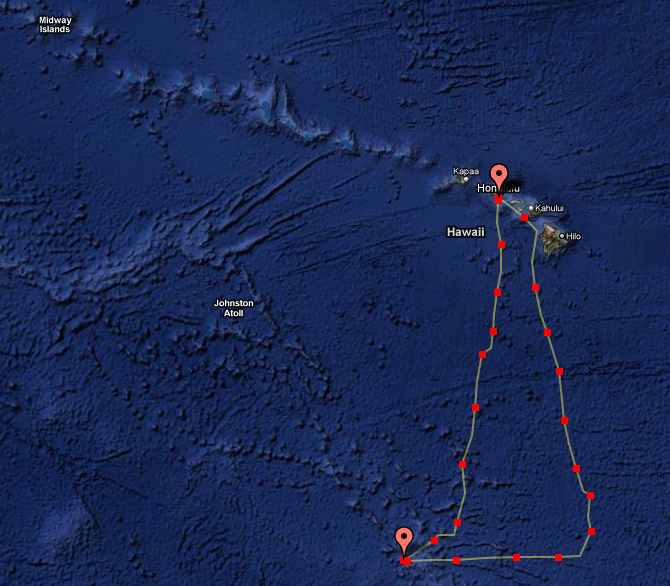
The coconut palm invasion is a problem for places like Palmyra Atoll, as it shifts the island's ecology away from native plants and animals. "I knew that rats could have an impact, I just didn't expect it to be this large." In the absence of rats, according to a population model the researchers built based on a decades' worth of data on coconut seed production, growth and survival, the coconut palms' population growth rate increased by 10%-enough to eventually overtake the island, had the managers not stepped in with an aggressive coconut palm removal project. "Rats were basically eating almost every nut before it even reached the forest floor," Miller-ter Kuile said.

"Two years later when I went back, I was wading through an infuriating carpet of seedlings that were taller than me, tripping over piles of coconuts." While the researchers found a 14-fold increase in seedling biomass, most of these new seedlings were juvenile coconut palms, their proliferation left unchecked by the removal of the rats. "I was on the island in 2012, just after the eradication and could easily navigate through the open jungle understory," Miller-ter Kuile said.

Only they were often not the Pisonia or other native trees that would have been the more ideal forests for the native seabirds and animals of Palmyra. In the years that followed eradication, Palmyra's understory did indeed fill with juvenile trees as seeds that hit the ground were allowed to take root. The Asian tiger mosquito was wiped out, while two species of land crab emerged, adding to the atoll's biodiversity.īut rarely is ecology easily untangled. The rats were quick to eat seeds and young plants coming out of the ground, and they frequented the canopy as well, often nesting in the coconut palms and eating coconuts.Įradication of the rats-which was conducted in 2011-did in fact result in a resurgence of vegetation on Palmyra. "Prior to the eradication, most of the understory of Palmyra was either bare ground-sandy soil or coral rubble-or covered in a carpet of ferns," said Ana Miller-ter Kuile, a graduate student researcher in the Young Group and lead author of a study that appears in the journal Biotropica. They had plots where they were monitoring trees in various stages of growth and survival how would the vegetation respond to the eradication of the island's main seed and seedling eater?

They had already been visiting Palmyra regularly to track another non- native species-the coconut palm-to see whether it was spreading invasively in the area, potentially impacting the nesting seabird population and changing the island's soil composition. Fish and Wildlife Service, The Nature Conservancy and Island Conservation-were planning to conduct a rat eradication project, UC Santa Barbara community ecologist Hillary Young and her research group saw it as an unusual opportunity.


 0 kommentar(er)
0 kommentar(er)
